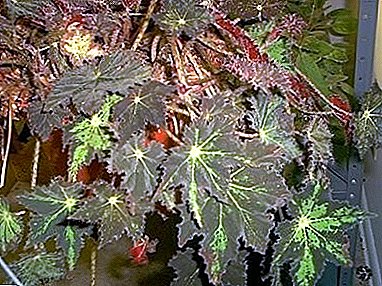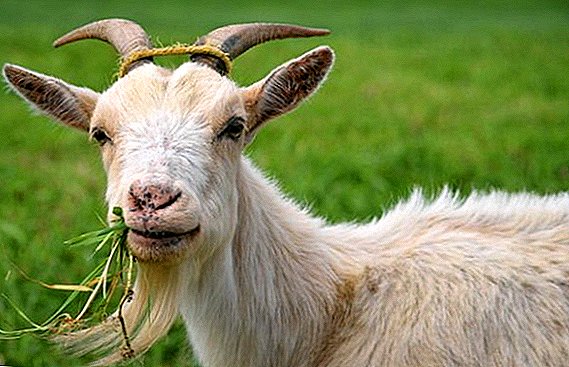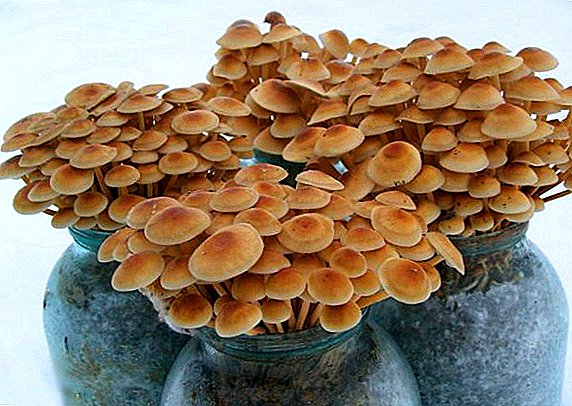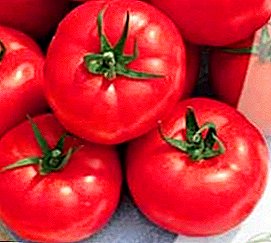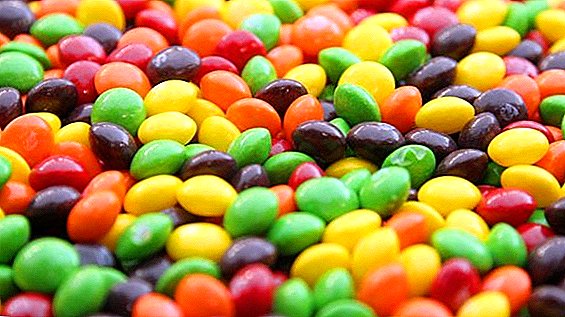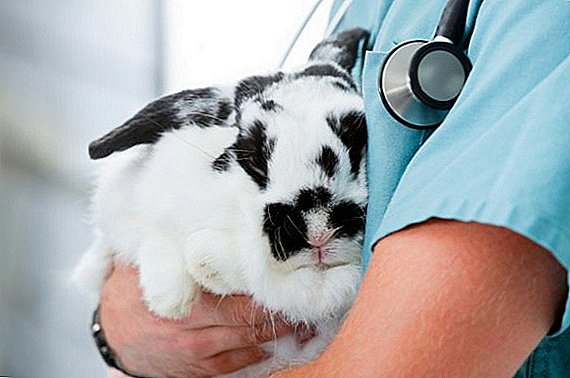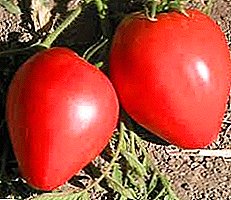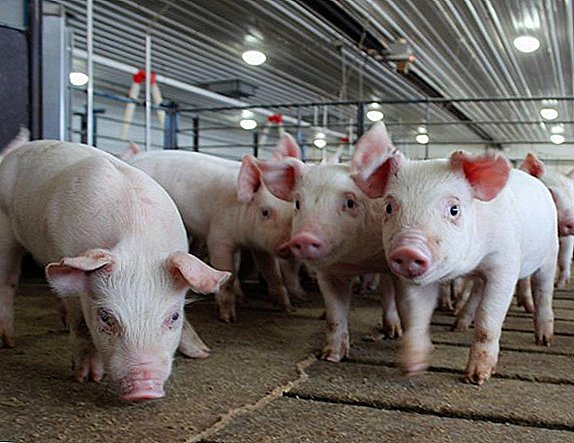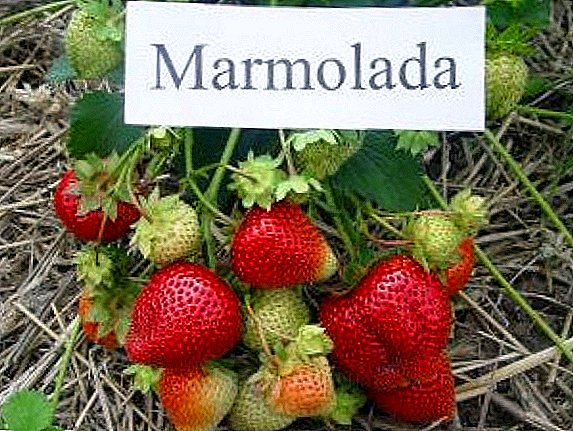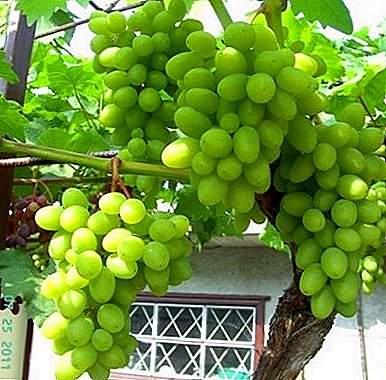
More recently, the gardeners of temperate and northern latitudes with the word "vineyard" could only sigh sadly.
And indeed: many varieties, even seemingly unpretentious, are afraid of cold weather and frost. Breeders have found a way to please the northern farmers.
Harold grapes easily tolerate low temperatures, and does not require too complicated self-care.
What kind is it?
Harold is a hybrid form of white table grapes. Maturity super early. It matures in about a hundred days, so the harvest can be harvested at the end of July and the beginning of August, but homemade wine lovers usually leave to hang until September, so that there is more sugar.
Among the white hybrid varieties are Timur, Bazhena and Muscat Delight.
The berries retain their presentation and taste, even during long-term storage or transportation, do not crack and do not deteriorate.
It is widely popular in winemaking as an integral part of a bouquet of table white and dessert muscatel wines, also used in desserts and fresh.
Harold Grapes: variety description
 The bush is very vigorous. The cluster has a cylindrical-cone-shaped form, dense, without polos, average weight - 500-600 g.
The bush is very vigorous. The cluster has a cylindrical-cone-shaped form, dense, without polos, average weight - 500-600 g.
Not prone to pea also Julian, Lancelot and Zagrava.
Flowers - hermaphrodites. Berries elongated, with a pointed tip, moon-amber color, above the average size (average weight 6 g). The skin is dense, medium thickness.
Pulp juicy, dense, not very meaty, but very sweet and with a rich aftertaste (nutmeg and strawberry notes).
Vine bright brown, powerful, flexible. Leaves bright green, medium sized, heart-shaped. Young shoots are light green, matured - brown in color with reddish nodules.
A photo
See photos of Harold grapes below:





Breeding history
It was obtained by crossing a hybrid of varieties Arkady and Delight with the Muscat summer variety at VNIIViV them. Potapenko (Novocherkassk).
In areas with warm and mild climates, the most popular, since the question of shelter is not even worth it. According to the breeders, the Siberian and Ural territories are also quite suitable for Harold, but the frost resistance of this variety is currently being tested.
Among the extremely cold-resistant varieties are Super Extra, Beauty of the North and Tukay.
Specifications
According to preliminary data, the variety is frost resistant - up to -25-26 degrees. Wasps, gray rot, mites, powdery mildew (oidium and mildew) are also not afraid. Shoots ripen almost the entire length.
It has a rich rich flavor with an unobtrusive nutmeg note. Harold variety is very prolific - it gives up to 15 kilos of berries from a bush.
By the Muscat varieties include: Ruta, Muscat Delight and Muscat Hamburg.
Soil conditions are not capricious - it tolerates both a light drought and humidity. Sugar level is good - about 20%, acidity - about 5 g / cubic dm.
According to some farmersHarold, grapes, afraid of spring frosts, in latitudes with tangible "minuses" requires mandatory shelter. Needs standard watering - from April to October.
Diseases and pests
Resistance of this variety to gray rot and powdery mildew good, but still not enough to neglect prevention. The same applies to diseases such as bacteriosis, anthracnose, chlorosis, rubella and bacterial cancer. Notified means armed. Knowing the signs and methods of prevention, you can protect your plants.
 To do this, it is recommended to spray the bush before the start of flowering with phosphorus-containing fungicides or one-percent solution of Bordeaux mixture.
To do this, it is recommended to spray the bush before the start of flowering with phosphorus-containing fungicides or one-percent solution of Bordeaux mixture.
Wasp and spider mite Harold is not afraid, but the birds - even as. From the annoying forty and sparrows save the hardened barrier mesh.
We'll have to take measures to deal with bunch of moths - Harold, unfortunately, is one of her "favorites." Moreover, this applies to the seed and biennial moths.
If you do not take action - spoil everything that he sees, and this inflorescence, and young shoots, and ovaries, and berries. And it must be said that a berry “tried” by a leaflet will immediately become a “target” for gray rot.
As a preventive measure, it is necessary to free the hive from excessive workload - to remove stepchildren and shoots, to provide clusters with good airing.
It is good to use insecticides against leafworms: Karate Zeon, BI-58, Kinmiks, Arrivo, Benzophosphate, Sumi-Alpha, Apollo, Carbotsin, Talstar, Zolon, Anometrin, Sherpa.
As for the grapes - sprayed in three stages. The first is 2 weeks after the first-generation butterfly years begin (April-May). The second - the very beginning of flowering. The third - ten to fifteen days after the second generation flew (end of June - beginning of July).
Grape leafworm can lime, sprinkling the vineyard in two stages. The first is at the beginning of the swelling of the kidneys, the second - after they are dissolved.
Harold grapes are an excellent choice for farmers in southern and central Russia. Where "real Russian winters" are felt, the bush must be covered for the winter. It will delight you with a bountiful and regular crop, you just need not be lazy, protect it from frost and enemies, like birds and caterpillars.


